The Article
Wilson Benesch Circle Turntable: A Symphony Of Curves
1st December 2015
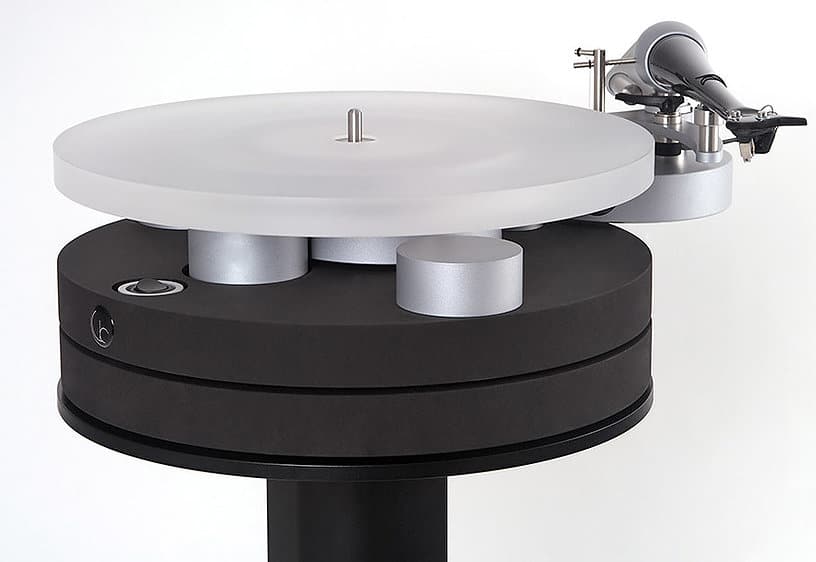
Although famous for its elaborate speaker designs, Wilson Benesch is rooted in vinyl. Paul Rigby reviews the Full Circle turntable
You could buy yourself a Porsche Cayman S, have a luxurious holiday in the Bahamas and still have change to decorate the front room for the price of Wilson Benesch’s, top of the range, Cardinal speakers. Yet, while the speakers grab the spotlight, it’s vinyl that is the core of the company, as Craig Milnes, designer of the Full Circle turntable, explained, “We started in business by releasing a turntable in 1990, the first turntable to feature carbon composite structures. That was followed by the world’s first hyperbolic curved tonearm, again in carbon fibre. We then transferred that technology into loudspeaker systems. Everything that we’ve ever done relates back to the turntable. The history of the company surrounds analogue.”
The original turntable design was popular but had problems. The sprung chassis was difficult to set up correctly while the motor, the centre of some serious design attention and investment, was increasingly seen as a weak point. The latter was an easy fix. Wilson Benesch adopted the 250rpm Premotec AC-synchronous motor, essentially the same, Dutch-sourced, design that you see in a number of successful turntable designs on the market. As for the isolation? “We now rely on two basic systems commonly seen in sprung systems. One is based upon soft compliant rubber and other uses a carbon fibre cantilever.“
Examining the Full Circle, it is notably divided into two parts, like a large Victoria Sponge cake. The base is attached to the motor while the upper part holds the vinyl. The two need to be linked but also isolated. The load frequency coming from the motor is tackled by rubber feet that sits in between the ‘sandwich’ but, said Milnes, there is a secondary system of carbon cantilevers that are, “…disposed between three aluminium pillars which are on the top of the second sandwich. Emerging from those are small diameter, uni-directional, carbon fibre rods of high torsion and stiffness. They support the sub chassis and eliminate a lot of the high frequency energy.
The Full Circle utilises a phosphor bronze bearing for the platter to rotate on, “Phosphor bronze gives you an accurate diameter throughout its length and doesn’t change over time as a result of external corrosive elements,” said Milnes.
On top of the acrylic platter, the company decided to lay a piece of felt, “It gives a better control and less artefacts,” said Milnes. “Felt has a nice dampening character over a wide bandwidth. We recommend to users that, when they are not using the turntable, to place an old piece of vinyl on top of the felt and platter to keep it clean.”
The included 0.5 tonearm, arrives as standard. It is based upon a vertical D2 steel shaft that includes 1.5% of carbon content running through its entirety to improve stiffness (the highest percentage of carbon that you can have in steel before it becomes brittle), “On the top of this structure we placed three, highly polished, 1mm ball bearings which is were the bearing itself is created,” said Milnes.
For tonearms, bearings are a big issue. There are two principle types on offer: a unipivot and a ball race. The latter is a circular diameter of steel with a number of ball bearings placed upon it with an outer shell. The balls run around inside the race. They are noisy and are best used in high velocity systems. Placed within a tonearm they suffer from ‘stiction’, “Imagine a car that is stood on a flat surface,’ said Milnes. “Getting a car moving is difficult. Once it’s moving, its fine and it takes less effort to keep it moving. The first phase involves overcoming inertia. That’s the problem with a ball race, getting it moving in the first place. It’s never really fluid in its movement.”
That’s the benefit of the unipivot, which is never in a stiction phase. The unipivot’s problem, though, is that, over time, it will change. If the mass of the tonearm system is resting on a sharp point, and that’s what happens with a unipivot, then that point might be perfect on the day of manufacture but, in a short space of time, that point will wear down to a radius. Also, the surface that it is pressing down onto will no longer be a perfectly flat surface, it will form a little indent.
“That’s why we created the concept of three ball bearings with a fourth ball that sits inside to locate it,’ said Milnes. “So, on top of the D2 steel stem, the three balls are held captive to create three contact points. The fourth ball sits within those three meaning that the friction levels are incredibly low but the centre of the bearing will remain exactly the same and will never change. Even if the balls wear, the rate of change will be the same on every one of the balls and will have no effect on the centre of the point of movement. We call that a Kinematic bearing.”
According to Milnes, the key to the success of the arm is the carbon tube, a tough task to implement correctly, “Most people get a piece of carbon tube, off the shelf, and stick a head shell on it. But that doesn’t make use of the carbon fibre and the dampening characterises are not optimised. The carbon fibres in our arm don’t flow in a straight line, they flow in a double helix shape, overlapping each other. Because it’s a double wall of carbon, it’s also a multiple double helix. This enables you to create one homogenous structure, running the carbon into a headshell so the arm and headshell are one piece.”
This unique design initially required outside, specialist, help. So Milnes approached a company called Advanced Composites (www.advanced-composites.co.uk), which is involved both in the aerospace and Formula 1 industries.
“How serious are they? Well, we were told that we couldn’t even meet with the company…because we couldn’t afford it. They charge many thousands to even sit down and talk around the table. We did go to a brief meeting in which one of the directors was quite disparaging and wanted the meeting finished quickly but, fortunately for us, there was someone else, one of his engineers, who talked to us after the meeting and said that he would be happy to work with us in his spare time. This guy had twenty years of carbon composite experience and had worked on the Rolls Royce RB211 carbon fibre fan blades. He created the tool that allowed us to design the tonearm tube.”
Wilson Benesch boast that the 0.5 is the stiffest tonearm in the world as well as the most highly damped and it’s all attributable to that construction from a single tool, “…that has been designed to allow the carbon to be placed exactly where it needs to be according to function. The 0.5 is the most basic form of this process.”
For the cartridge, the Ply, the company used a Benz Glider generator with their own carbon fibre body.
The review sample of the turntable was supplied with an elegant, made-to-measure pedestal, upon which the Full Circle sat.
SOUND QUALITY
Spinning prog outfit, Caravan’s quirky Golf Girl, my first impression of the Full Circle was lead singer, Richard Sinclair’s, well-articulated performance. Lyrics were admirably enunciated with a sense of space between the instruments and his delivery that enhanced the clarity of this element.
Mid range performance was personified by the trombone (with it’s mysterious player — some say it’s Kinks-related Paul Beecham — does anyone out there really know?), was efficient and lean. What it lacked in the rich, extended dynamics of a more expensive turntable, it more than made up for in terms of focus with a single-minded approach to the soundstage that was clean and uncluttered. Some might say that the midrange is a tad relaxed in nature but, to be honest, this attribute will benefit extended listening and prevent fatigue. Listening to the trombone and vocal, the Full Circle was obviously good at controlling possibly unruly frequencies and would not lend itself lightly to any sort of bright tendencies. That’s not to say that detail was lacking or that the performance was in any way conservative, far from it. Acoustic guitar work was effective with an attack, during strumming, that flowed with the emphasis laid upon each and every strum.
Wind instruments did present a slight concern, however, and were, despite my midrange theories, verging on the strident. The Full Circle appeared to be contradicting itself. My eye began to wander to the pedestal stand.
Before addressing that, I looked towards the lower frequencies that, although enhanced in weight by the Icon monoblocks, did promote a big and bold bass presentation. I was very impressed that a turntable in this price bracket could offer such a bass performance and delighted to hear that there wasn’t an ounce of bleed from the lower to the upper frequencies, the each part of the sonic rainbow knew its place.
I then took action regarding those troublesome wind instruments and transferred the Full Circle from its own pedestal to a Hush Platform (£490) that, in turn, sat upon a Hush Yewbarrow rack (Three-shelf from £1,750).
Playing the Caravan track, the flute solo was at the forefront of the mix, yes, but no longer made the ears hurt. This improvement wasn’t the only enhancement, however. Guitar attack was aggressive and precise while the subtle flute playing behind the trombone solo was more noticeable and provided a greater 3D effect, again a nice surprise for a turntable in this price bracket. Even if you cannot afford an expensive Hush Platform and Rack then I would personally recommend a wall shelf (Such as the Decent Audio model, £179), especially for sprung floors, to maximise the Full Circle’s performance.
I wondered how far I could push the Full Circle package so added an Oyaide STB-MS ‘vinyl stabliser’ (£225). The Full Circle certainly benefitted from its use. For example, the soundstage was focused with Sinclair’s vocals being accurate in nature while bass was now sprightly, tight and agile. Treble, which was excellent at all times, was now given emphasis, principally because of the darker tone of the presentation, a result of low distortion.
Removing the felt mat and listening to the ceramic platter alone, the upper mids now had a cooler presentation. Bass had a finely honed edge and a snappy character while upper mids were slightly more clinical, giving the midrange a strident air.
Instead, I added an Oyaide BR-12 butyl rubber/tungsten mat (£90) that smoothed the midrange frequencies, giving the organ a mature, richer flavour while the guitar had an enhanced metallic sound. The trombone released more textural detail while the vocal was now almost angelic in its presentation. More startling was the fact that, for the first time, Richard Sinclair’s vocal performance, later in the song, was now revealed to be double tracked. Bass, meanwhile, was focused and dark.
Moving to classical and Sir Arthur Sullivan’s Pineapple Poll, conducted by Charles Mackerras, the initial string section at the start of the Opening Dance was neither too growling or laid back in attack. Brass never barked or shouted but nor did it fade into the background. The emphasis on the entire orchestral presentation was enough to deliver the correct amount of motion without any thought of grandstanding.
Spinning jazz and Mark Murphy’s Mark Time!, backed by John Dankworth’s band, Murphy’s delivery was lively, animated and sparkling. The Full Circle allowed him the freedom to perform without restrictions and Murphy was not backward in utilising his own abundant energy to the full. It would have been easy for the mids to blur and bloom in this situation but the Full Circle was disciplined. For example, jazzing up the Beatles’ She Loves You provided a fulsome bass, vibrant percussion with a bubbly sax performance from Tubby Hayes.
I then moved from electrostatic to boxed speakers: namely the Kudos Super 10. Returning to the Caravan track, this was ideal opportunity to hear the enhanced bass tones produced via the Kudos alongside the open upper mids. The Kudos, in comparison to the Quads, where rather livelier in the upper frequencies but the Full Circle was able to keep control of sonics in this area while the bass was hearty, powerful and quite explosive at times.
CONCLUSION
The Full Circle turntable is an attractive design. Its compact nature will please many users that are restricted by space. Providing a fairly straightforward set-up routine, the deck provided deep and solid bass and a spacious upper midrange with, if sited correctly, not a hint of brightness. To that extent, the tweaks and improvements employed within the review also showed that any new user of a Full Circle will benefit, not only from an excellent sound available straight from the box but also from numerous small but effective sonic upgrades which will not break the bank.
WILSON BENESCH FULL CIRCLE TURNTABLE
Price: £2,795
Tel: +44 (0) 1142 852656
Web: wilson-benesch.com
Good: design, big bass, expansive midrange & focus
Bad: nothing at the price

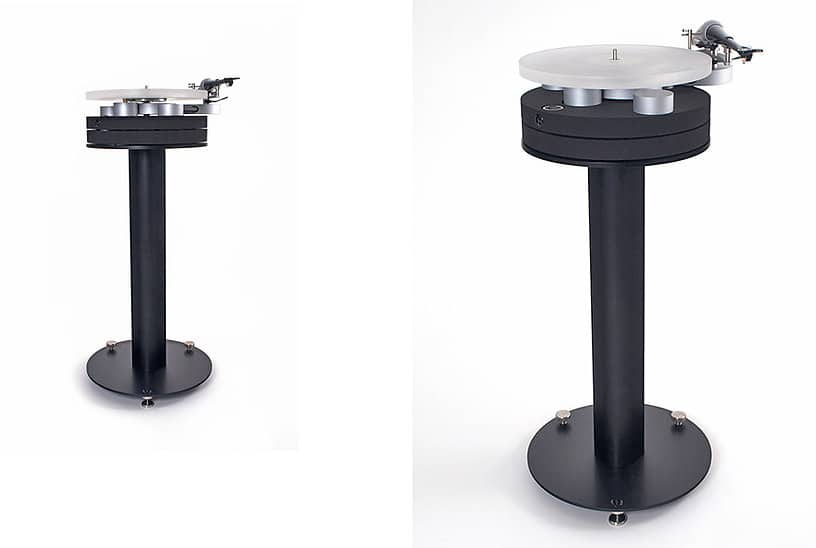
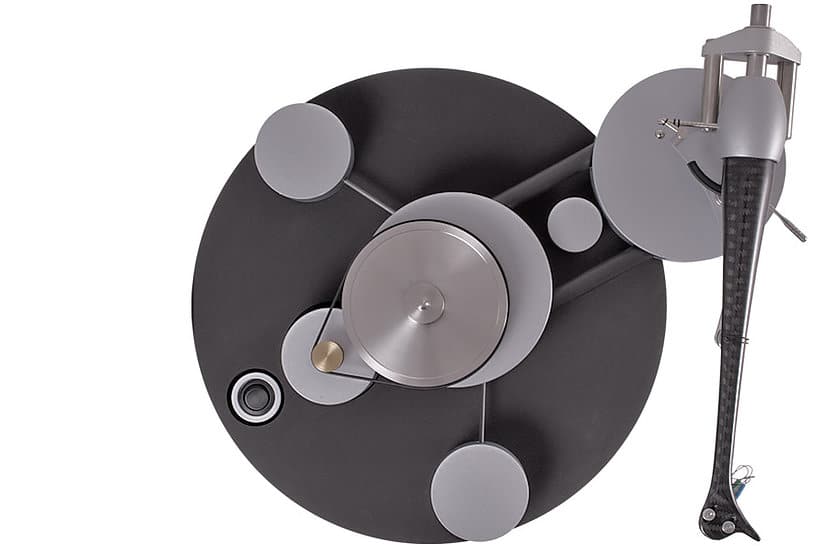
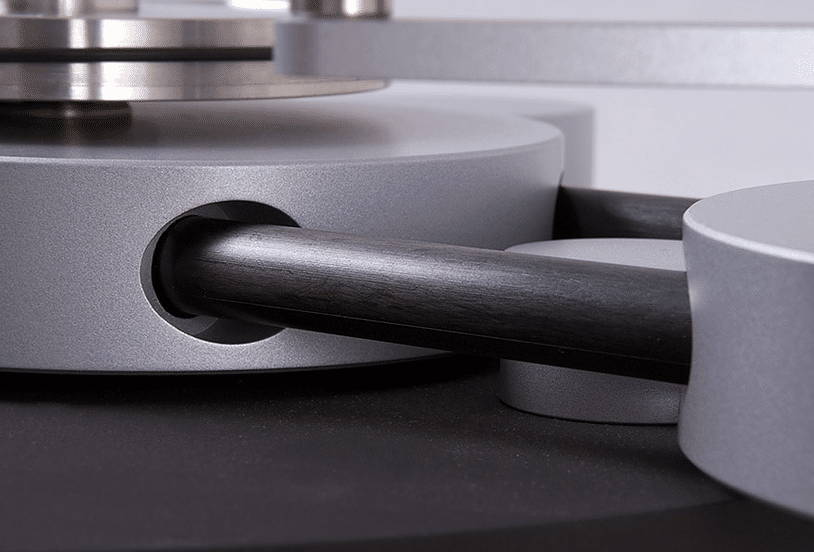


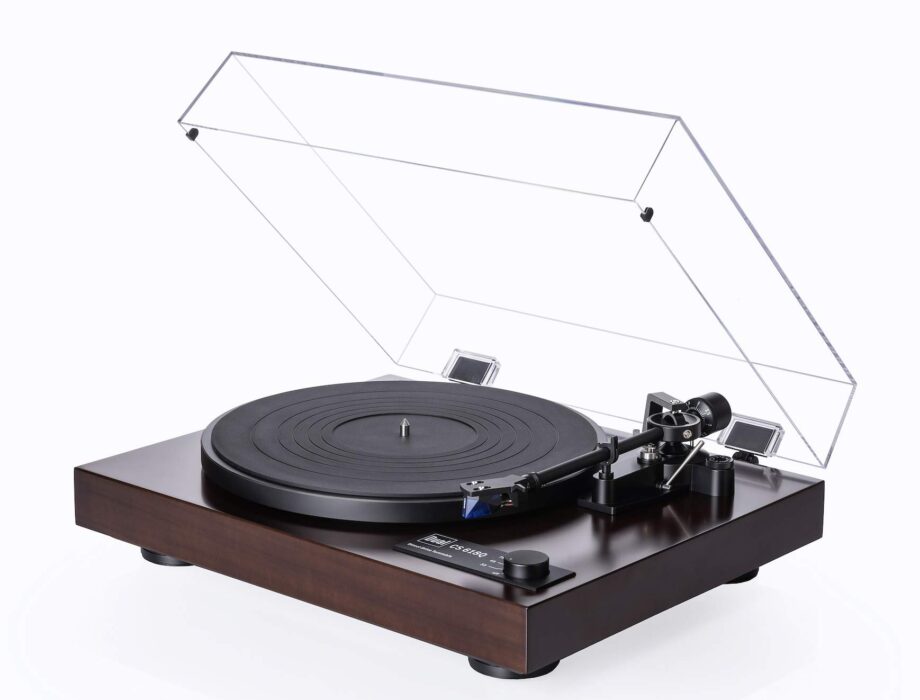
Sorry Paul, have you ever compared the Circle versus some of the best Rega designs as the RP8, RP6 or P9?
Many thanks
Mauro
I haven’t Mauro, I’m afraid. Not directly, as an A-B. That said, recalling the performance of the Circle at the time though, it certainly competed well.